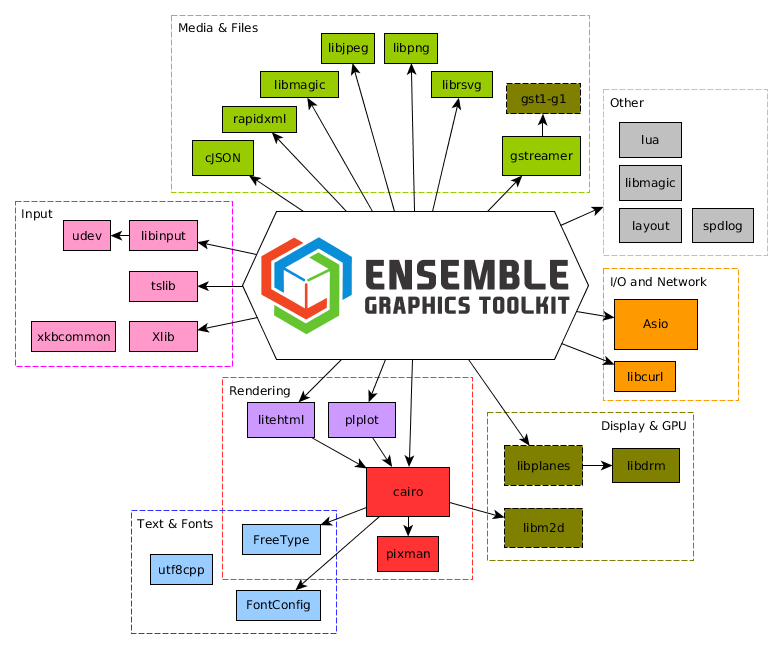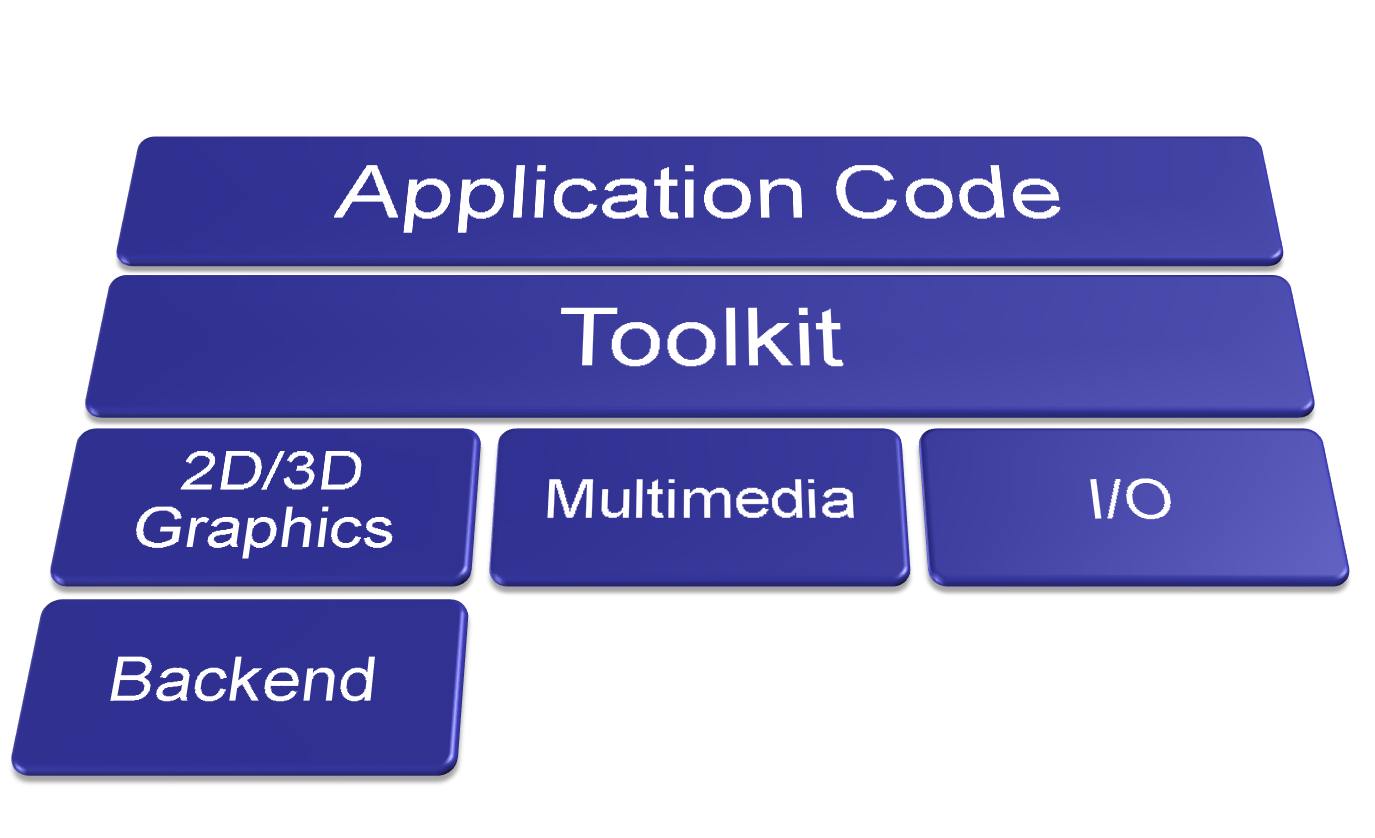 |
1.12 |
 |
1.12 |
The Ensemble Graphics Toolkit (EGT) is a C++ GUI Linux toolkit for Microchip processors. EGT provides modern GUI functionality, look-and-feel, and maximizes performance while staying as close to the metal as possible in embedded Linux applications. EGT provides a consistent API and solution in order to build robust GUI-based applications that make the best use of the hardware available.
EGT uses and provides a standard API to many different third parties, or system libraries and resources, in order to provide an easy-to-use and consistent interface for developing a GUI application. Here are some of them:

A graphics toolkit (also known as a Graphical User Interface (GUI) framework) is used to construct graphical user interfaces of applications. It provides a well defined API and an organization of features, properties, and methods that makes creating user interfaces easier and more consistent. This can mean creating an API to the operating system or various system libraries. In addition, a toolkit may provide various tools that make creating graphical applications easier for both programmers and graphic artists.
In order to accomplish this, EGT contains several different layers of software, with the application code expected to be sitting on top.

A software architecture involving EGT usually involves using EGT as the middle layer between the application code and everything else. EGT provides an abstraction layer to everything below it to an application programmer.

In order to provide this abstraction, EGT provides a list of objects, or C++ classes, some of which are specialized into a type called egt::Widget. The Controls are your standard interface components. Sizing and Positioning widgets help with layout and position of other widgets. There are some basic Shapes widgets for drawing plain shapes. And of course, the Images and Video widgets handle playing audio and video related media.
And then, there are some framework and application level classes like egt::Application, egt::EventLoop, egt::Input, egt::Screen, Timers, and egt::Event that help everything work together.
This is a list of high level features generally supported and provided by EGT:
EGT depends on a variety of different third party libraries. Some of them are required or recommended, and others are optional for conditional features in EGT. EGT is configurable so you can remove support for third party libraries if they are not needed.
| Library | Dependency | Notes |
|---|---|---|
| libplanes >= 1.0.0 | Required (Target) | Access to Microchip DRM/KMS hardware driver. |
| libdrm >= 2.4.0 | Required (Target) | Access to DRM/KMS hardware drivers. |
| cairo >= 1.14.6 | Required | 2D drawing library. |
| freetype | Required | Support for font rendering. |
| x11 >= 1.6.3 | Required (Host) | Support for X11 display server. |
| libinput >= 1.6.3 | Recommended | Support for reading input devices (keyboard, touchscreen, mouse). |
| libjpeg | Recommended | Support for JPEG content. |
| libmagic | Recommended | Support for automatically detecting mime types of content. |
| zlib | Recommended | Support for zlib compression. |
| libpng | Recommended | Support for PNG content. |
| fontconfig | Recommended | Support for system level font configuration. |
| lua >= 5.3.1 | Optional | Support for lua bindings and built in lua interpreter. |
| xkbcommon | Optional | Support for system configured key mappings. |
| tslib >= 1.15 | Optional | Support for some touchscreen events. |
| gstreamer-1.0 >= 1.8 | Optional | Video, audio, camera playback. |
| libcurl >= 4.5 | Optional | Built in application level networking protocols. |
| librsvg-2.0 | Optional | SVG rendering support. |
| libsndfile | Optional | Support for parsing wav files. |
| alsa | Optional | Support for audio playback. |
| plplot | Optional | Charting support. |
The <egt/ui> file provides several macros to compile time check what is support in EGT based on conditional support. For example, EGT_HAS_SVG and EGT_HAS_CHART are defined when those features are available.
EGT also unconditionally includes some third party developed libraries. These libraries are included internally by EGT, however the capabilities they provide can sometimes be controlled by EGT compilation options.
EGT takes advantage of and focuses on using features available in the C++14 language standard. The EGT API is all inside a egt namespace. This namespace contains an inline namespace egt::v1 which is used for versioning the API in the future.
Within the egt namespace, there are several other namespaces that have different purposes and meaning.
| Namespace | Meaning |
|---|---|
| egt | Default namespace. |
| egt::v1 | Inline namespace denoting the API version. |
| egt::v1::detail | A namespace usually used to hide internal EGT functionality. This is not considered stable or public. |
| egt::v1::experimental | A namespace for what is considered unstable and experimental. |